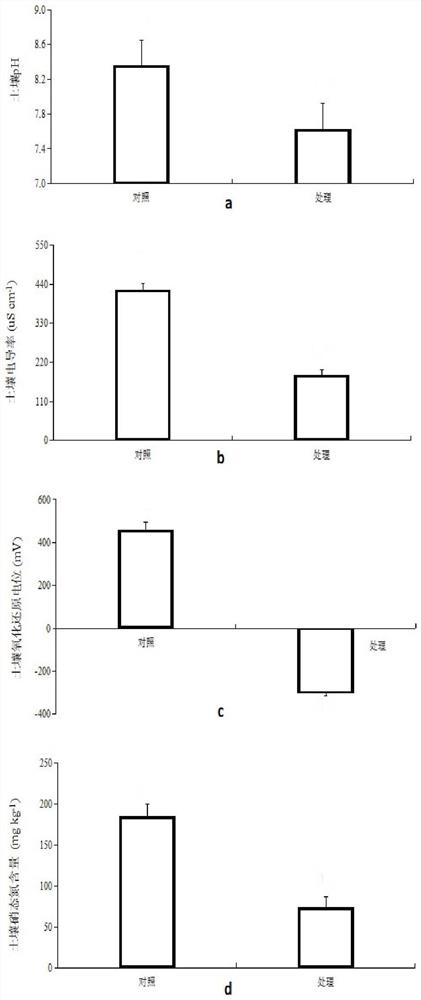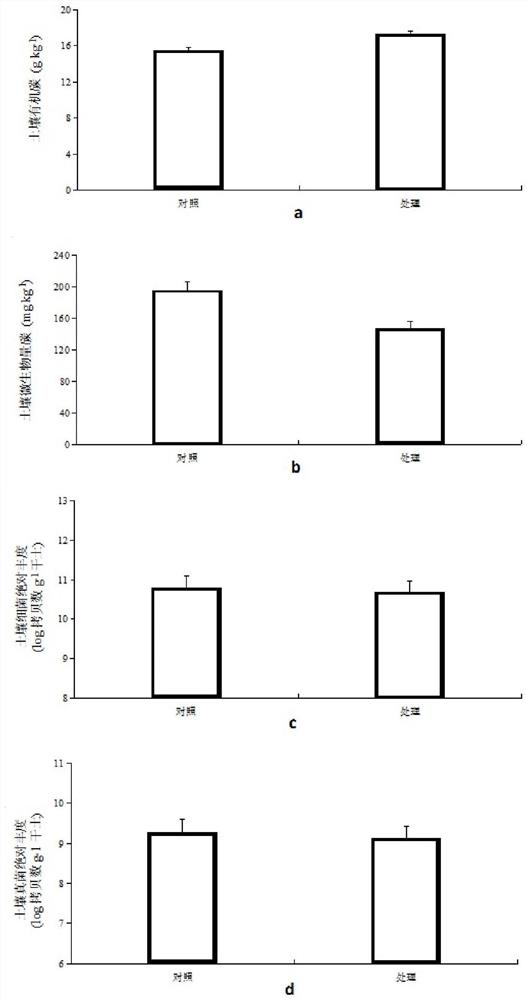Method for synchronously reducing secondary salinization and antibiotic resistance genes of greenhouse soil
A technology of antibiotic resistance and secondary salinization, applied in the fields of soil preparation methods, agricultural machinery and implements, etc., can solve the problems of high cost, low efficiency, and reduction of soil antibiotic resistance genes, so as to reduce investment and improve Vegetable yield and quality, effect of improving microflora
- Summary
- Abstract
- Description
- Claims
- Application Information
AI Technical Summary
Problems solved by technology
Method used
Image
Examples
Embodiment 1
[0026] Embodiment 1: tomato field test
[0027] It is carried out in a facility vegetable cultivation base in Xianyang City, Shaanxi Province. The base has been established for 15 years, and organic fertilizers and chemical fertilizers are continuously applied all year round. The amount of application varies with different crops. Due to the serious problem of soil salinization due to excessive application of chemical fertilizers, the survey found that more than 80% of the 75 greenhouses had salinization problems. Four tomato greenhouses with serious salinization were selected for the experiment (the area is 55×9=495m2 2 ) were carried out, and two treatments were set up in each greenhouse, which were the control group and the treatment group respectively, and the control area was 45m 2 (5×9m 2 ), the area of the treatment group is 450m 2 (50×9m 2 ). The test was carried out from August to September. The organic material used was fresh corn stalks, with an amount of 12 t...
Embodiment 2
[0029] Embodiment 2: laboratory simulation test
[0030] The soil tested was collected from a greenhouse vegetable greenhouse of an agricultural cooperative in Xianyang City, Shaanxi Province. The greenhouse has been continuously applied with large amounts of farmyard manure and chemical fertilizers for more than 10 years, and a large amount of base ions (nitrate nitrogen, potassium ions, etc.) and antibiotic resistance genes have accumulated in the soil. The simulation test was carried out in a laboratory incubator (at a temperature of 40° C.), setting a control group and a treatment group, and repeating 3 times. The control group did not do any treatment, while the treatment group firstly mixed the soil with crushed (about 2cm) wheat straw (amount of 6g kg -1 dry soil) and put it into a wide-mouth plastic bottle, pour water until 5cm of water accumulates on the soil surface, cover the soil surface with a 6-thread plastic film to seal, and then put all the culture units into...
PUM
 Login to view more
Login to view more Abstract
Description
Claims
Application Information
 Login to view more
Login to view more - R&D Engineer
- R&D Manager
- IP Professional
- Industry Leading Data Capabilities
- Powerful AI technology
- Patent DNA Extraction
Browse by: Latest US Patents, China's latest patents, Technical Efficacy Thesaurus, Application Domain, Technology Topic.
© 2024 PatSnap. All rights reserved.Legal|Privacy policy|Modern Slavery Act Transparency Statement|Sitemap



